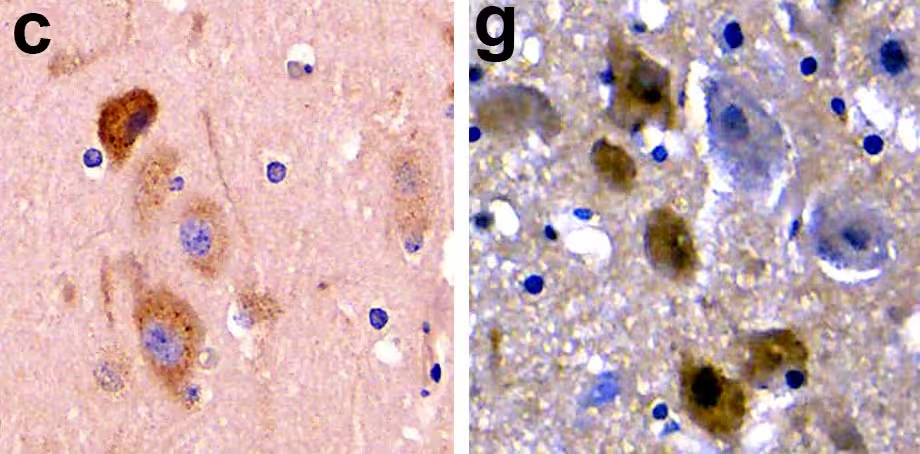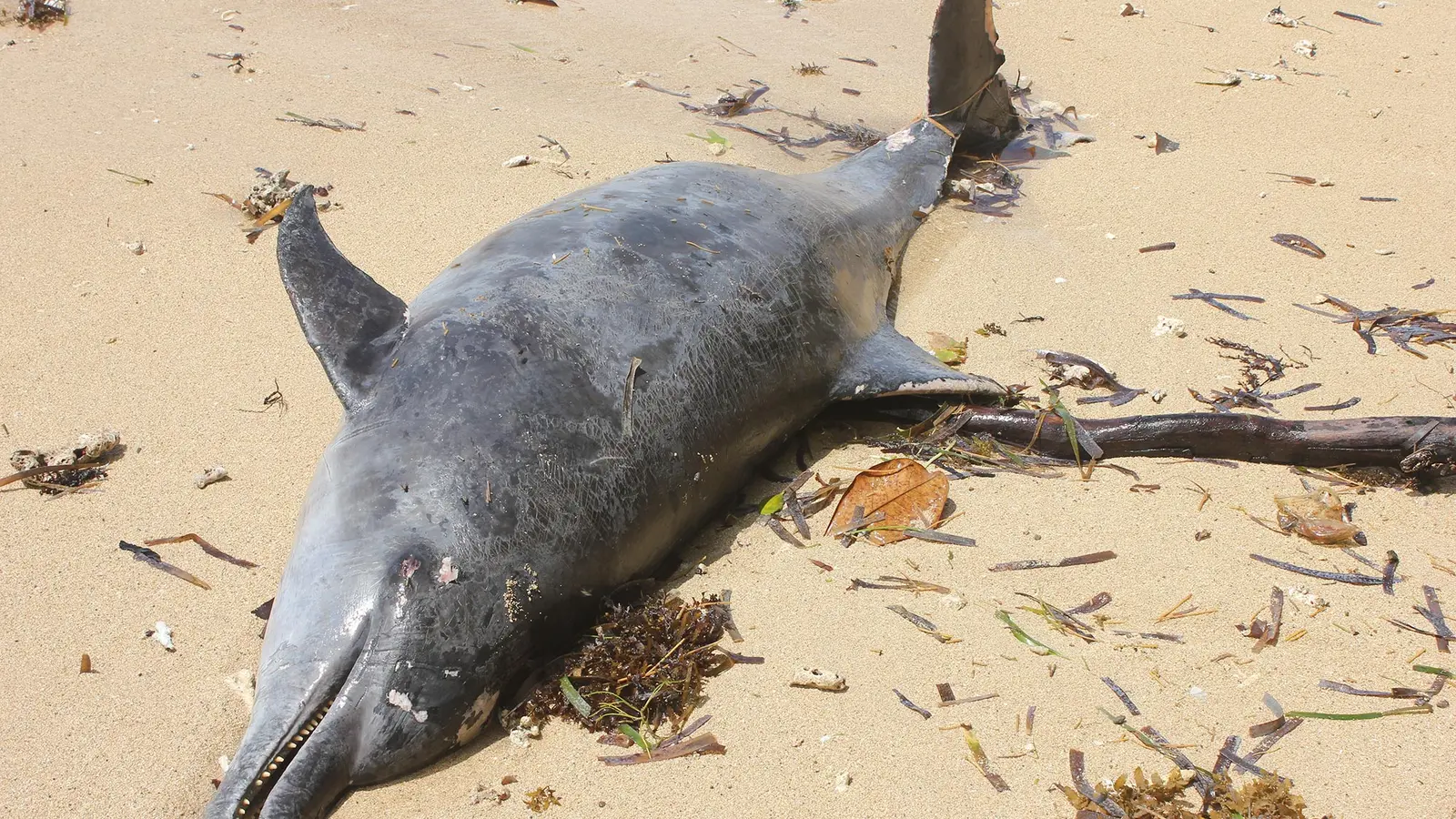5 Minutes
Dolphins found stranded on beaches may be suffering not only from physical exhaustion but also from brain damage that resembles human Alzheimer’s disease. New research links repeated exposure to cyanobacterial toxins — especially BMAA and its close chemical relatives — with amyloid plaques, tau tangles and disorientation in these marine mammals.
When beach rescues meet a baffling cause
For people who work on shorelines, the scene is painfully familiar: rescuers crowd around a beached dolphin or whale, hosing it with seawater, shading it from the sun and covering it with wet blankets in a race to keep it alive until the tide can carry it back to safety. Volunteers and marine biologists often try to guide still-alert animals toward deeper water. But many strandings end in tragedy, and the question persists—why do intelligent, social animals suddenly become disoriented and beach themselves?

Bottlenose dolphins in Florida
A disturbing biological link: algae, toxins and brains
Researchers across multiple institutions have proposed a striking hypothesis: repeated exposure to cyanobacterial toxins could trigger a dementia-like condition in dolphins. Cyanobacteria — the microscopic organisms responsible for algal blooms in warm, nutrient-rich waters — produce neurotoxins including β-N-methylamino-L-alanine (BMAA) and chemically related isomers such as 2,4-diaminobutyric acid (2,4-DAB) and N-2-aminoethylglycine (AEG). These compounds can accumulate in marine food webs, concentrating in apex predators like dolphins that eat contaminated fish.
Scientists note parallels with human epidemiology. On Guam, long-term dietary exposure to BMAA and other cyanobacterial toxins correlated with clusters of neurodegenerative disease and with neuropathology resembling Alzheimer’s, including amyloid deposits and abnormal tau proteins. Laboratory experiments show that BMAA can damage neurons and produce memory deficits in animal models, lending mechanistic plausibility to the field observations.

c: Beta-amyloid pathology in a stranded dolphin brain; g: hyperphosphorylated tau protein in the brain of a stranded dolphin. Credit: David Davis
What the dolphin studies found
A focused investigation of 20 common bottlenose dolphins stranded in the Indian River Lagoon, eastern Florida, revealed troubling biochemical and genetic signatures. Researchers detected BMAA and its isomers in dolphin brains, with particularly high levels of 2,4-DAB in animals stranded during seasonal cyanobacterial blooms. In fact, dolphins found during bloom periods had up to 2,900 times the concentration of 2,4-DAB compared with dolphins recovered outside bloom season.
Neuropathological analysis showed hallmark features associated with human Alzheimer’s disease: β-amyloid plaques, hyperphosphorylated tau proteins and inclusions of TDP-43 — a marker linked to severe neurodegeneration. At the genetic level, dolphins collected during bloom seasons exhibited hundreds of differentially expressed genes connected to Alzheimer’s-related pathways, suggesting the toxins are not just present but biologically active in the brain.

Comparative Alzheimer’s pathways in dolphins in bloom season
Why this matters to ecosystems and people
Algal blooms are becoming longer and more frequent in many coastal systems. Rising water temperatures, increased nutrient runoff from agriculture and sewage discharges all favor cyanobacterial growth. In Florida, for example, toxic-laden waters have been released downstream from Lake Okeechobee into the Indian River Lagoon, exposing wildlife — and by extension potentially human populations — to concentrated toxin loads.
"Since dolphins are considered environmental sentinels for toxic exposures in marine environments," explains Dr. David Davis of the Miller School of Medicine, "there are concerns about human health issues associated with cyanobacterial blooms." The same pathways that appear to produce Alzheimer’s-like pathology in dolphins raise questions about long-term risks to people who rely on seafood or recreational waters affected by cyanobacteria.

Dr. David Davis examining neuropathology using a digital Huron TissueScope LE at the Brain Chemistry Labs.
Local health statistics add to the alarm. Miami-Dade County reported one of the highest prevalences of Alzheimer’s disease in the United States in 2024. While Alzheimer's is a complex disease with multiple drivers — genetics, age, lifestyle — environmental risk factors such as cyanobacterial toxin exposure are increasingly recognized as potential contributors.
Expert Insight
"These findings emphasize that neurotoxic algae are not only a short-term public nuisance causing fish kills and foul water, they can also have chronic, system-wide consequences," says Dr. Laura Mendez, a marine toxicologist and science communicator. "Monitoring for BMAA and related compounds, reducing nutrient runoff, and improving bloom forecasting are practical steps that can reduce risk to wildlife and humans alike."
Policy and conservation responses will need to bridge marine ecology, public health and agricultural management. Reducing nutrient inputs to coastal waters, enhancing sentinel monitoring programs that test marine mammals and seafood for neurotoxins, and expanding neuropathological surveillance in strandings are all measures suggested by the current data.
As climate warming and human land use continue to amplify algal bloom risks, scientists say that dolphins may be an early warning: what accumulates in their brains could foreshadow broader environmental and public health challenges.
Source: scitechdaily


Leave a Comment